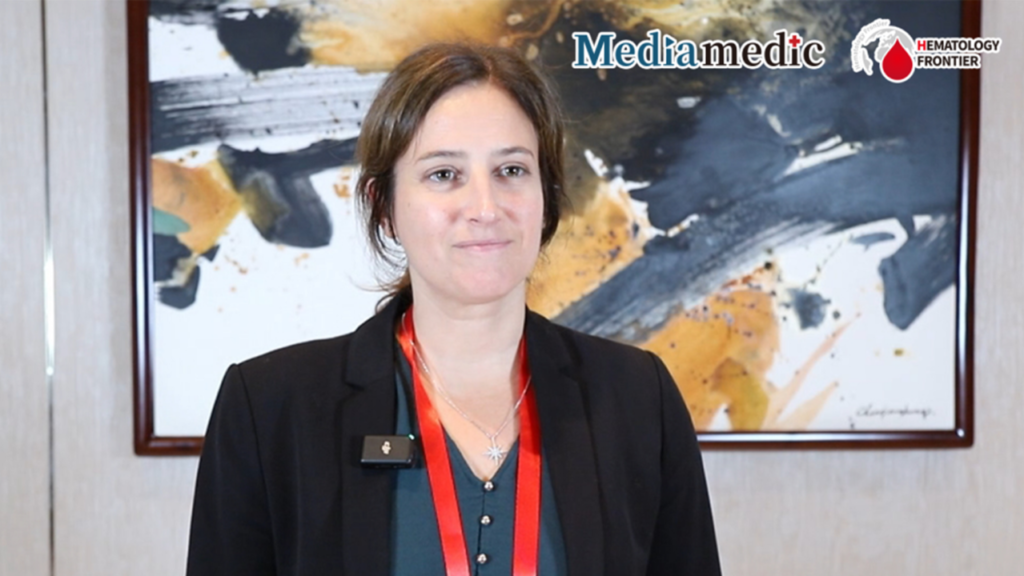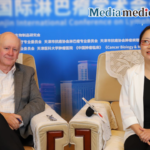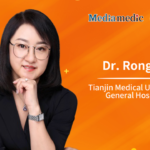
The 11th Sino-French Hematology Academic Conference of the Chinese Medical Doctor Association attracted hundreds of domestic and international authoritative experts and scholars in the field of hematology to gather together. During the conference, "Hematology Frontier" specially invited Professor Eolia Brissot from Hôpital Saint-Antoine in Paris to share the latest explorations of non-chemotherapy strategies in the treatment of acute lymphoblastic leukemia.Hematology Frontier:How do non-chemotherapy regimens specifically outperform traditional chemotherapy in terms of efficacy and safety for patients with acute lymphocytic leukemia?
Professor Eolia Brissot:We are in a new era where we have the development of the blinatumomab, that is a CD19 and CD3 bispecific T cell engager.I think the best model is a Ph+ ALL. There are two main studies, the study from the Italian group D-ALBA study when they test the association of dasatinib plus blinatumomab. And they find excellent progression-free survival or leukemia-free survival, with a follow-up of a little bit more, around 34 months. They find four patients who are the CNS relapse and also different type of relapse with a new mutation T315I mutation. The question is maybe dasatinib is not sufficient,Ponatinib may be better. The other question is we need maybe chemotherapy to avoid CNS relapse.The second study is about ponatinib and the association with blinatumomab, and was published by Jabbour and colleague. Even in patient with de novo Ph+ ALL they perform the association of ponatinib at the beginning 30 milligrams per day. And when they obtained the molecular CR, they decrease to 15 milligrams per day. What they see is excellent also PFS on the overall survival. Only one patient underwent allogeneic stem cell transplantation. But they also observed some CNS relapse. It’s why we had a recent study when they combine a little bit of chemotherapy plus ponatinib plus blinatumomab. And we’re waiting for a long term follow-up, but maybe this is the best combination. Not to totally forgive to chemotherapy, but to reintroduce it to avoid CNS relapse.
Hematology Frontier:What cutting-edge non-chemotherapy technologies or therapies are currently being investigated by your team or internationally for the treatment of acute lymphocytic leukemia? Please provide some examples.
Professor Eolia Brissot:I think the quite new that I used to use blinatumomab in first line now. Because it had been a shown in the New England that even if patients are MRD negative, the benefit to receive blinatumomab to have a better PFS and OS. In fact, in the French GRAALL that is a cooperative group, we will incorporate blinatumomab in the first line.There are also interesting data about CD38 antibody, but more in TLL. We use sometimes CD38 antibody in TLL relapse. We will look in the first line in the next months or next years. And in relapse I think it is interesting to look at Venetoclax and azacitidine. Even in ALL because there are some reports that show very interesting data. Sometimes we don’t know what to do with this patient. So I think there are different kind of treatments that will be developed. And we are performing then today nowadays when patients are in relapse. But we have to better understand the mechanism to see if we can use them in the first line.
Hematology Frontier:How do you envision the further development and refinement of non-chemotherapy regimens for acute lymphocytic leukemia in the future? What are the potential research directions or strategies?
Professor Eolia Brissot:It’s a difficult question, because, it’s good, because we have seen that the prognostic of ALL patient have changed during the last 5 or 8 years, but there are still patients who relapse. So first, the main goal is to cure patient in the first line. So it’s why maybe for B-ALL to use, I think maybe chemotherapy antibody and could be sufficient.And when people are at high risk of relapse, if they are KMT2A rearrangement, or if they are IKZF1 mutation plus NOTCH1 mutation to undergo in first line CAR-T cells or allogeneic stem cell transplantation. We don’t have the response now.For Ph+ ALL, it’s really fantastic to see the prognostic of this patient. Now we think really have to use TKI, maybe the third generation of TKI and to use also blinatumomab. This morning a group is using dasatinib plus a CD19 and CD22 CAR-T cells as a reservoir, very impressive. But I don’t know if in clinical practice, we will be really able to have access to this kind of treatment. Maybe for now or another one, plus antibody plus a little bit of chemotherapy could be not so much toxic and to be very effective.


